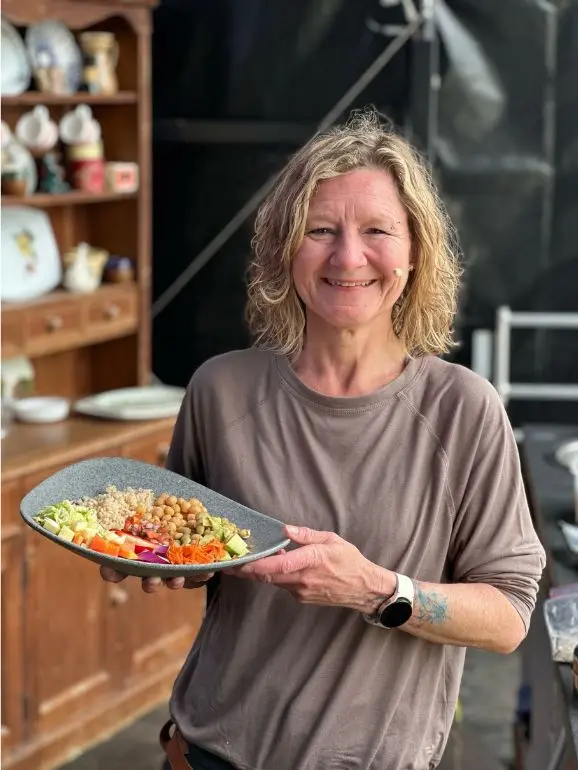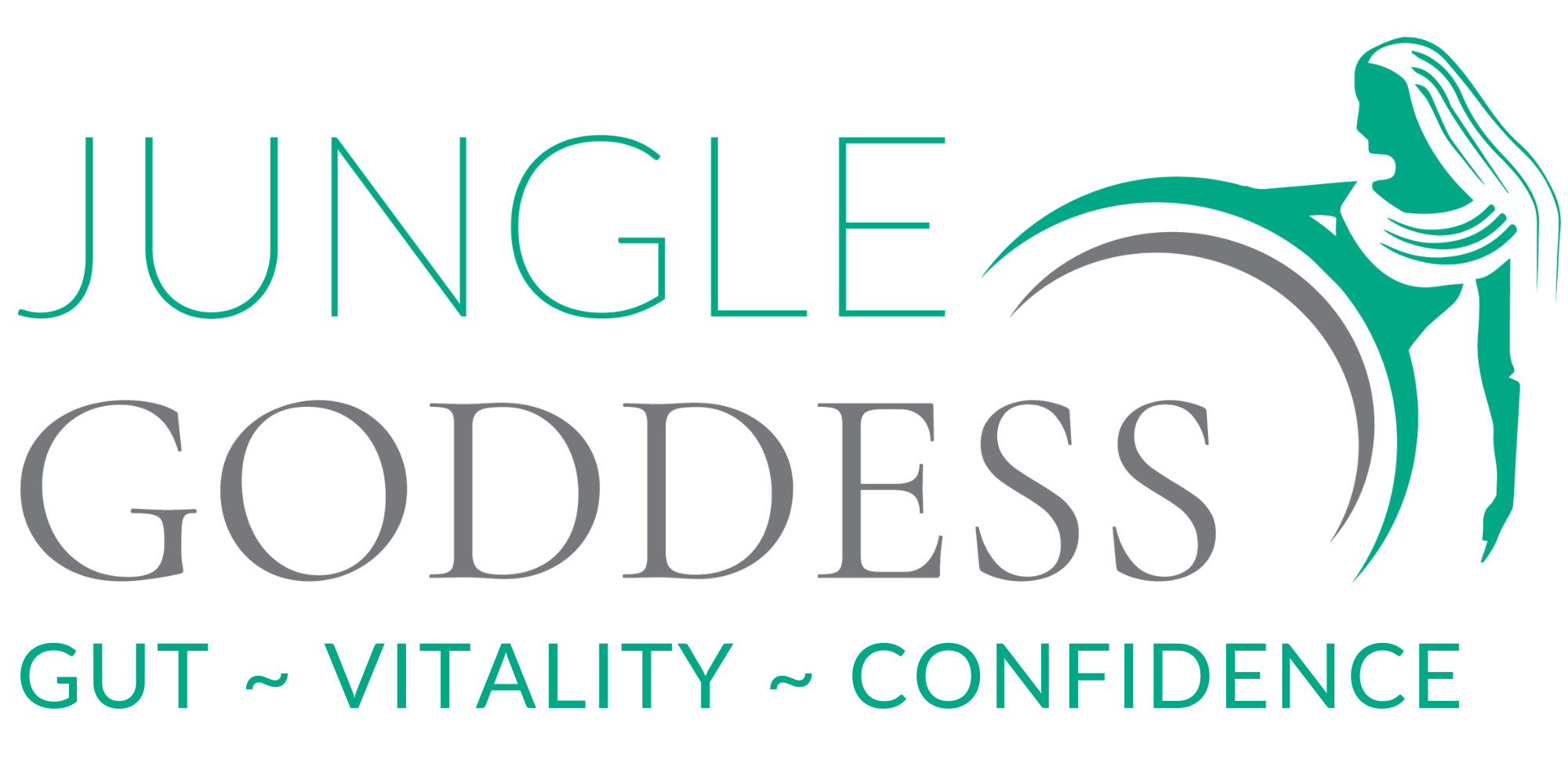The Everyday Frustration of Bloating
Bloating is one of the most common digestive issues I see in my work—and one of the most frustrating. It can appear out of nowhere, leave you feeling heavy and uncomfortable, and make it hard to trust your own body. Clothes suddenly feel tight, confidence dips, and social plans start revolving around how your stomach might behave that day. Food usually gets the blame, but what about causes of bloating beyond food?
Most people I speak to have already tried everything they can think of: cutting out gluten or dairy, eating “cleaner,” avoiding bread or sugar, taking probiotics, or following strict elimination diets. Some find short-term relief, but for many, the discomfort always returns.
Living with Crohn’s disease and periods of IBS myself, I understand that cycle of hope and disappointment. I’ve felt my belly swell within minutes of eating and endured the long, painful hours that follow. Even after years of working in gut health, I still have moments when my digestion reminds me it’s a work in progress.
The truth is, bloating isn’t always caused by food. While what we eat can certainly play a part, there are often deeper causes of bloating beyond food—and understanding them is key to finding lasting relief.
Why Cutting Out Food Isn’t the Whole Answer
When bloating becomes relentless, food often gets the blame. It’s an understandable place to start—after all, the discomfort usually shows up soon after eating.
Elimination diets can help in the short term. Removing common irritants such as gluten, dairy, or highly processed foods may calm symptoms for a while. But for many people, relief fades and the list of “safe” foods keeps shrinking.
The reason? Reactions are often temporary responses to a stressed or imbalanced gut, not lifelong intolerances. When underlying issues—like inflammation, microbial imbalance, or poor digestive function—are resolved, tolerance usually improves. Some foods can return to the plate freely, others in moderation, and a few may remain best limited.
It also helps to understand the different types of reactions we lump together as “intolerance”.
Reaction Types

Allergy
A true food allergy involves an immediate immune response, where the body mistakes certain proteins for harmful invaders. Even tiny amounts can trigger symptoms like hives, swelling, or anaphylaxis — though some people also experience digestive upset.
Common allergens include nuts, eggs, dairy, shellfish, and wheat.
It’s important to distinguish coeliac disease, which is an autoimmune reaction to gluten, from non-coeliac gluten sensitivity, which causes digestive discomfort without the same immune damage.

Food Intolerance
A food intolerance doesn’t involve the immune system. It’s often about the gut’s ability to break something down.
The most familiar example is lactose intolerance, where low levels of the enzyme lactase lead to gas, bloating, and discomfort after dairy.
Other intolerances relate to difficulty processing certain food chemicals like MSG, sulphites, or caffeine — or an impaired ability to break down histamine, which can cause flushing, headaches, and gut symptoms.
These reactions depend on quantity: small amounts may be tolerated, while larger servings overwhelm the system.

Food Sensitivity
A food sensitivity involves a delayed immune-mediated reaction. Symptoms can appear several hours or even days after eating, which makes them difficult to link to specific foods.
Sensitivities are often associated with inflammation or a compromised gut barrier (“leaky gut”) that allows food particles to interact with the immune system.
Because reactions are delayed and inconsistent, people can find themselves chasing triggers endlessly — which is where functional testing and gut repair become so valuable for clarity and long-term resolution.
Most bloating relates to the latter two—intolerance and sensitivity—which tend to improve as gut health recovers.
So rather than focusing only on what to remove, it’s equally important to explore why your gut is reacting in the first place.
Rather Than Focusing Only on What to Remove
Explore Why Your Gut is Reacting in the First Place
The Hidden Causes of Bloating Beyond Food
When the focus stays only on food, it’s easy to miss the deeper systems that influence digestion every single day. Even when you’re eating well, what happens inside the gut — and how it communicates with the rest of your body — has a huge impact on how comfortable you feel after meals.
Three key areas often underlie the causes of bloating beyond food:
Gut–Brain Communication
The gut and brain are in constant conversation through a network known as the gut–brain axis. When stress, anxiety, or even low mood disrupt this communication, digestion slows or becomes irregular.
Food can sit longer in the digestive tract, leading to gas, pressure, and discomfort. In people with IBS, these communication breakdowns are common, creating heightened gut sensitivity and inconsistent motility (movement through the intestines).
The result? Bloating that flares when life feels fast-paced, stressful, or emotionally draining — not necessarily when you’ve eaten “the wrong thing.”
Dysbiosis (Gut Microbial Imbalance)
Your gut is home to trillions of microbes — bacteria, yeasts, and other organisms that help digest food, produce nutrients, and protect the gut lining.
When this delicate ecosystem is disrupted (from antibiotics, illness, poor diet, or chronic stress), opportunistic microbes can take over. They ferment food particles, producing excess gas and inflammation.
This imbalance, called dysbiosis, is one of the most common and overlooked causes of bloating beyond food. Restoring balance through diet, lifestyle, and targeted support can dramatically reduce symptoms and improve resilience.
Gut Barrier Function (Leaky Gut)
The lining of your gut acts as a selective barrier — allowing nutrients through while keeping larger particles and toxins out.
When it becomes inflamed or damaged, small gaps can form between the cells. This “leakiness” allows food particles to enter the bloodstream, triggering immune responses and low-grade inflammation.
The result is increased food reactivity, fatigue, and sometimes skin or joint symptoms alongside bloating. Healing the barrier is an essential part of calming these reactions and restoring normal digestive tolerance.
Together, these systems explain why two people can eat the same meal and have completely different experiences — and why addressing only diet rarely solves the problem.
When these systems fall out of sync, the gut can’t do its job properly — no matter how healthy the diet looks from the outside.
That’s why the next step is about clarity. Instead of more restriction or guesswork, it’s about understanding what’s really happening inside your gut so you can target the cause, not just the symptoms.
Nutrition works best when digestion works — real healing starts with function, not food alone.
From Insight to Healing — Repair, Restore, Rebalance
Testing provides a clearer picture of what’s happening inside your gut — but knowledge alone isn’t the finish line. The next step is helping your body recover its natural rhythm.
Once we know what’s driving your symptoms, we can begin rebuilding the gut from the inside out. I use a framework called the 4 R approach:
-
Remove the foods, stressors, and microbial triggers contributing to inflammation.
-
Replace what’s missing — enzymes, stomach acid, or nutrients that support digestion.
-
Reinoculate the gut with diverse, beneficial microbes through diet and targeted probiotics.
-
Repair the gut lining with restorative nutrients and calming lifestyle practices.
Healing is never just about what you eat. It’s also about how you eat, how you rest, and how you respond to stress. Movement, sleep, mindset, and nervous-system regulation all play a role in calming the gut and improving resilience.
When these layers work together, digestion starts to feel easier — not forced or fragile, but steady and reliable again.
And as your body begins to rebalance, confidence grows. You start to trust your gut — not just as an organ, but as a guide — reminding you that real healing isn’t about restriction; it’s about restoration.
Why Testing Changes the Path Forward
Functional testing takes the guesswork out of gut healing, helping you see what’s really going on beneath the surface.

For years, nutrition and health coaching relied heavily on elimination diets — long, restrictive processes that can be frustrating and difficult to sustain.
I’ve recently shifted toward offering functional testing because it gives us clear, personalised insights in a much shorter timeframe.
Testing can highlight which foods your body is currently reacting to, but it also goes deeper, looking at markers of gut health such as bacterial balance and gut barrier function.
This means we can see whether bloating is linked to dysbiosis, inflammation, or a compromised gut lining, and build a plan that addresses all of those layers together.
It’s not about replacing food awareness — it’s about removing the guesswork and creating a clearer starting point for healing. When we understand what’s happening, we can move forward with precision and confidence rather than endless trial and error.
Curious What’s Really Going On In Your Gut?
Functional testing helps uncover the root causes of bloating and discomfort — from food sensitivities to microbial imbalance and gut barrier health.
Learn how testing works, what it reveals, and how it can guide your next steps toward lasting digestive relief.
Your Gut Isn’t The Problem — It’s the messenger
Listening To Your Gut
Your gut isn’t just where food is digested — it’s where so much of your wellbeing begins.
When you start to listen, really listen, it tells you what it needs: rest, nourishment, calm, balance.
Healing takes time, but every mindful step you take — every breath before a meal, every choice to pause instead of push through — sends a signal of safety to your body.
And when the body feels safe, it can finally start to heal.
Your gut isn’t the problem — it’s the messenger. Learning to understand it is the beginning of lasting change.
Where To Begin
If bloating and digestive discomfort have been part of your life for a while, start small — and start with awareness.
Notice what your gut is trying to tell you: the patterns between meals, mood, and symptoms. A few calm breaths before eating, slowing down at mealtimes, and giving your body regular rhythms can make more difference than you might expect.
If you’ve already tried changing your diet and are still searching for answers, it might be time to look deeper. Functional testing can help you see what’s really going on — whether that’s microbial imbalance, inflammation, or reactions to specific foods — and guide you toward a plan that fits you.
You don’t have to keep guessing or struggling alone. With the right insight, support, and structure, your gut can settle, your energy can return, and your body can start feeling like home again.
Explore or Connect to Discuss
Your Gut Health Guide

Nikkie Windsor UKIHCA-RHC
Nutritionist, Health Coach & Breathwork Facilitator
Jungle-Trained. Science-Informed.
I help people in their 50s move from gut chaos, low energy, and overwhelm to feeling calm, strong, and confident in their bodies again.

Nikkie Windsor UKIHCA-RHC
Nutritionist, Health Coach & Breathwork Facilitator
Jungle-Trained. Science-Informed.
I help people in their 50s move from gut chaos, low energy, and overwhelm to feeling calm, strong, and confident in their bodies again.
Are You Ready to Change Your Gut Story?
You don’t have to manage this alone. Take the first step to feeling better today.


